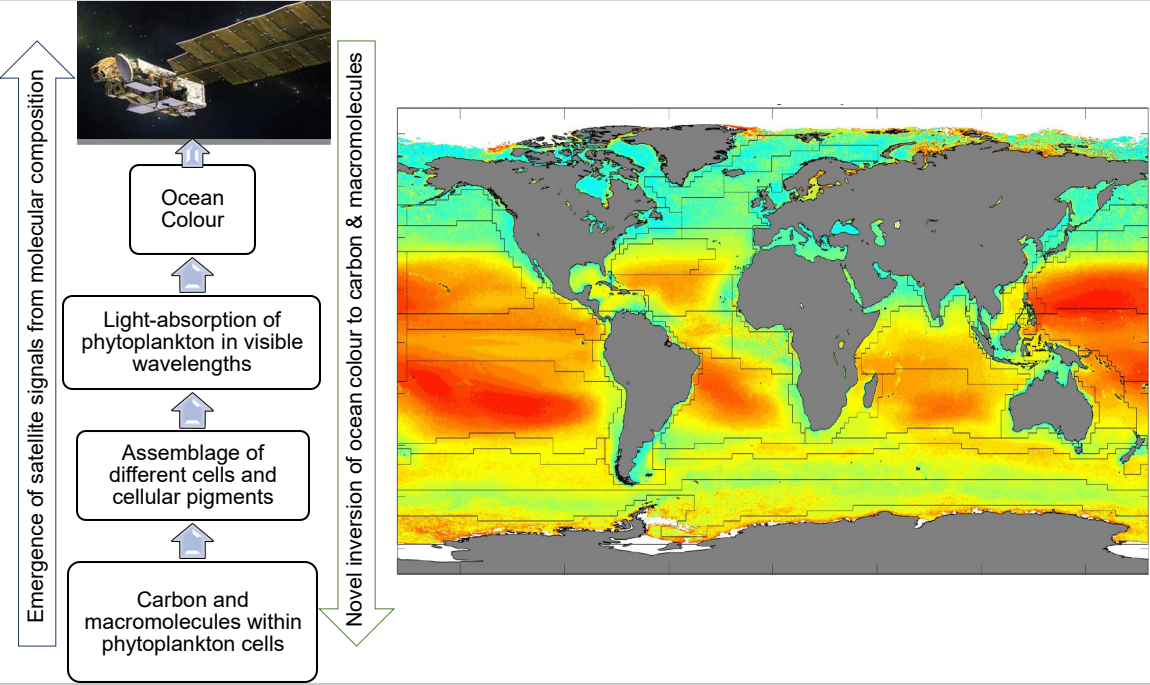Climate scientists have a clearer picture of how much carbon is absorbed by our oceans and its implications for climate change, thanks to a new way to measure ocean carbon from satellite images. Its Reading developers have made their code and data freely available for research, doing a good turn for science, society and the planet.
Oceans are Earth’s most important carbon sinks. This is down to phytoplankton: tiny, green, marine organisms which carry planet-warming carbon from the ocean’s surface to its depths, locking it away. So-called oceanic biological carbon is of great interest to climate scientists, policy-makers and the fishing industry, but getting hold of specific information about it from satellites is not easy.
Reading environmental scientist Dr Shovonlal Roy has developed new algorithms and computer code that use the varying colours of the ocean as it appears in satellite images to generate data on how much phytoplankton there is, and therefore how much carbon.
Roy has also worked with NASA and European Space Agency-funded scientists to generate new datasets which show how oceanic biological carbon is distributed on a global scale. They’ve made these tools and datasets freely available to be re-used by anyone for the common good, in any programming language.
The work has met climate scientists and policy-makers’ long-held need for more accurate ocean carbon estimates for studying how climate change is affecting the oceans, the global carbon cycle and net zero.
This much-in-demand data has now been used in many publications worldwide, underpins NASA-funded research, and is central to a proposed major new Plymouth Marine Laboratory-led project on how ‘blue carbon’ contributes to the world’s carbon budget.
“Shovon has developed generic and reusable algorithms of phytoplankton carbon pools in the ocean, based on fundamentals of phytoplankton bio-optics. He has taken the extra effort to ensure that end users can implement the algorithm operationally. His algorithms are instrumental for deriving an ocean carbon budget from satellite remote sensing.” — Dr S. Sathyendranath, Merit Remote Sensing Scientist, Plymouth Marine Laboratory
Team: Shovonlal Roy
Partners
- California State University San Marcos
- University of Pennsylvania
- Plymouth Marine Laboratory
Funders
- Royal Society
- European Space Agency
- NASA

